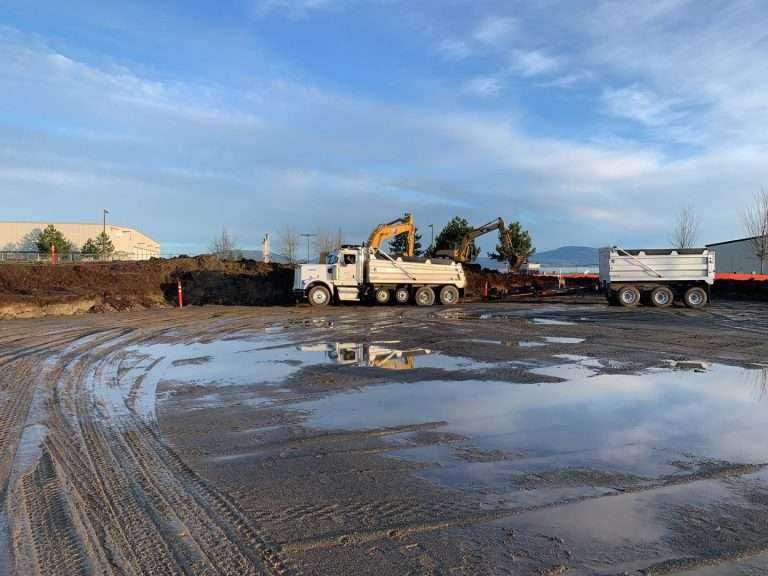What Is Earthwork Estimates?
In the construction industry, things work a little differently than the usual shop and buy. For anyone working as an earthwork contractor, you will know that earthwork estimates are a crucial part of any project.
If projects such as dam construction or bridge building come up, earthwork contractors that propose accurate bids can win a contract. Contractors have to do a lot of work to correctly figure out earthwork volumes and areas.
CF Excavating takes pride in being able to share our insight on projects large or small with clients in need of assistance. We’ve drafted some guidance on earthwork estimates to help you get a better understanding.
What Is Earthwork?
When breaking down or cutting sections of the earth, such as batches of soil or large sections of rock, these engineering processes are called earthworks. Earthworks are processes found in most civil-engineering projects that alter the topography of any site. These processes are necessary for the construction of dams, roads, bridges, homes, and more.
Two important processes to understand earthwork are cutting and filling. Cutting involves the removal of large chunks of earth surface. For example, this could include removing a hill (or part of one) to create a road. Filling describes the shifting and relocation of excavated material or “fill” to another earth surface area for compacting.
How to Calculate Earthwork Estimates
Earthwork estimates are calculatable through the average method, the block method, or the section method. However, the section method delivers the most correct results.
Average Method
The average method is best used for small projects where you will need to determine Levels at each grid point. This method is the most simple method to use only where there is cutting or where there is filling. This is an important point to distinguish as the combination of cutting and filling leads to incorrect estimates produced.
These incorrect estimates occur because the values of cutting and filling offset or nullify one another during the averaging process. To calculate the earthwork estimate requires multiplying the area by the difference between the average of two sets of levels.
Formula:
Volume = Area * Difference between the average of two sets of levels.
Block Method (Division of Square Method)
The block method is most often used before building construction occurs to work out the volume for leveling projects. This method is the middle ground between the average method and the section method. It is more accurate than the average method but simpler than the section method.
However, as above, when there is cutting and filling in the same block, they can nullify each other. Fortunately, the margin of error is a lot smaller than the average method.
To calculate the block method, work out the volume of each cutting or filling for each block. Thereafter, sum them all together to find the total volume.
Formula:
Volume= Area of each block * Sum of cutting for each block OR Sum of filling for each block
Section Method
The section method is useful in most really large infrastructure projects such as roads, dams, railroad projects, among others. Although touted as a method higher in accuracy, the section method is also more difficult to work out. It becomes especially more challenging as it requires points to intersect where lines that serve as surfaces connect.
However, despite it being more difficult to work out, the financial rewards can be worth it. The first step is to find out the Cutting and Filling for each section using the Nett Area Calculation Method or the Trapezoidal Method. Following this step, multiply the average area with the distance between sections.
Errors to Account For
There are some areas for incorrect measurements to account for and manage. These sources include the instrumental, personal, and natural error of the survey.
Furthermore, earthwork estimators have to consider the consequences that earthwork processes have on soil volumes. There are three types of soil volumes, namely bank volumes, loose volumes, and compacted volumes.
In addition, aerial topography also has areas of error. It faces geometric distortion and, accordingly, gives a somewhat slanted, diagonal view due to the camera height and earth curvature.
A few solutions to understanding these errors include:
1) Integrating and streamlining multiple-sources of data
2) Adopting a 3D constructible model for a simplified experience of construction
3) More efficient methods of data reporting in a few simplified reports
4) Use constructible models to monitor the project and identify areas for enhancing the project and Key Performance Indicators (KPIs)
5) Making projects visible remotely for continued assessment
Final Thoughts
Estimating earthworks is not a foolproof source of accuracy. But, it is a carefully assessed estimate to best allocate resources. Getting this estimation wrong is the difference between seeing profits or losses, and the losses can be quite steep.
CF Excavating has the experience to support you on your construction journey. If you have a construction project that requires earthwork estimates, CF Excavating is here to help.





